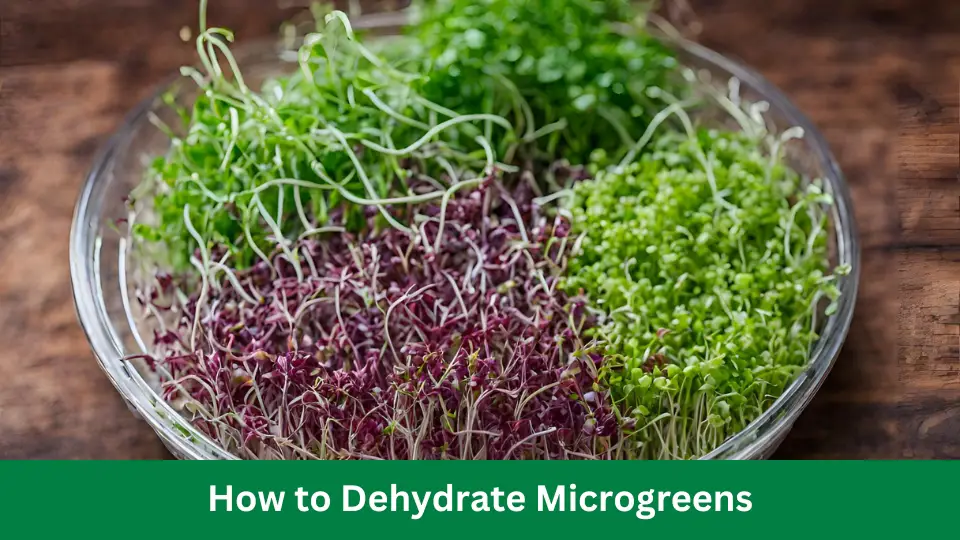How to Dehydrate Microgreens: spread them out in a single layer on a dehydrator tray and set the temperature between 95°F and 110°F. Are you looking to extend the shelf life of your microgreens?
Dehydrating microgreens is a simple and effective method. Removing moisture from greens preserves nutritional value and crispiness. We will guide you on how to dehydrate microgreens using a dehydrator. Whether you are a restaurant owner, an amateur gardener, or a health-conscious individual, learning this technique will help ensure your microgreens stay fresh for longer.
So, let’s dive in and explore the step-by-step process of dehydrating microgreens.
Preparing Microgreens For Dehydration
When preparing microgreens for dehydration, following a few key steps is essential to ensure the best results. These steps include selecting fresh microgreens, cleaning and sanitizing them, and trimming and removing excess moisture.
By carefully following these steps, you can enhance your dehydrated microgreens’ taste, texture, and overall quality.
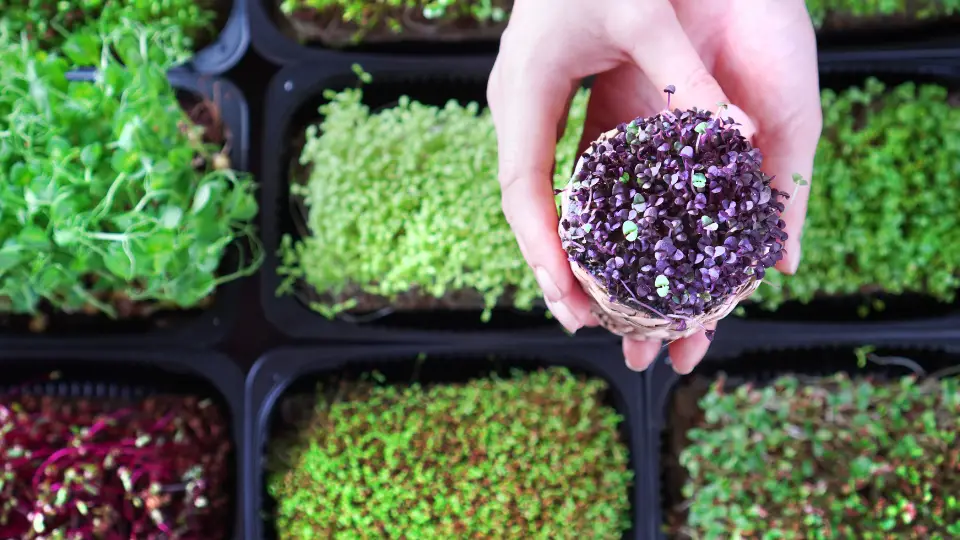
Selecting Fresh Microgreens
Before starting the dehydration process, choosing fresh and vibrant microgreens is crucial. Look for microgreens with bright colors and crisp leaves. A
void greens that appear wilted, discolored, or have any signs of decay. Organic microgreens also guarantee the absence of harmful chemicals and pesticides.
Cleaning And Sanitizing
Bold Cleanliness is crucial when working with microgreens. Properly cleaning and sanitizing your microgreens will help remove any dirt, bacteria, or other contaminants that may be present.
- Washing: Start by gently rinsing the microgreens under cool running water. Remove any visible debris while carefully not damaging the delicate leaves.
- Sanitizing: After washing, prepare a solution of one part vinegar to three parts water. Submerge the microgreens in the solution for a few minutes, then rinse them thoroughly with clean water.
- Drying: Use a salad spinner or pat the microgreens gently with a clean cloth or paper towel to remove excess water.
Trimming And Removing Excess Moisture
Bold After cleaning your microgreens, it’s time to prepare them for dehydration by trimming and removing excess moisture. This step ensures proper airflow and prevents mold or uneven drying.
- Trimming: Carefully inspect the microgreens for any damaged or wilted leaves. Remove them using clean scissors or kitchen shears.
- Removing excess moisture: Spread the microgreens onto a clean, dry surface, such as a clean dish towel or a baking sheet lined with parchment paper. Arrange them in a single layer, allowing enough space between each green to prevent overlapping or crowding. Let them air dry for a few minutes before proceeding with the dehydration process.
These steps will set you on the right path to dehydrating microgreens like a pro. With the right selection, proper cleaning, and thorough moisture removal, your dehydrated microgreens will retain their flavor and nutritional value. This makes them a versatile ingredient for salads, garnishes, and more.
Methods Of Dehydrating Microgreens
Dehydrating microgreens is a great way to preserve nutritional value and extend shelf life. By removing the moisture from the greens, you can create a dried product that can be stored for longer periods without losing its flavor and health benefits.
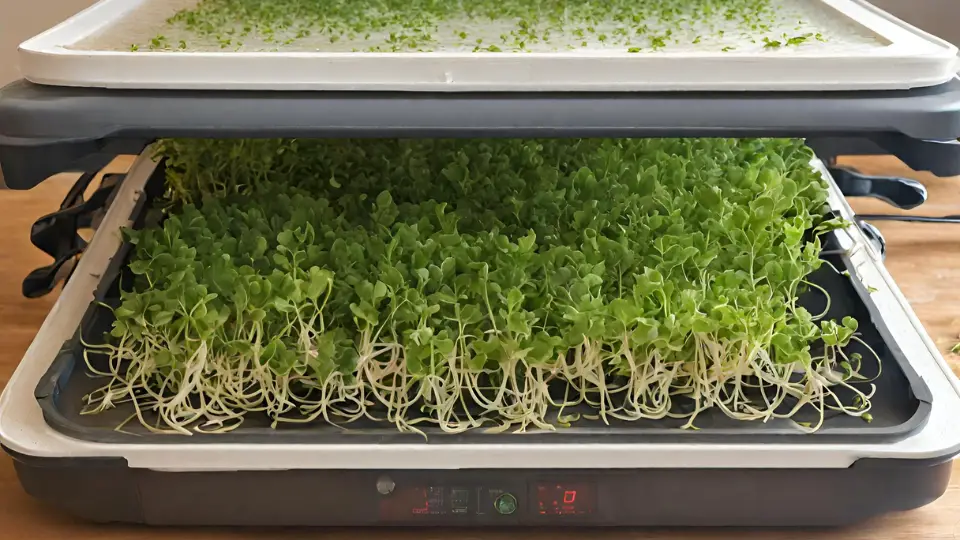
Here, we will explore three methods of dehydrating microgreens: dehydrator, oven drying, and air drying.
Using A Dehydrator
A dehydrator is an efficient and reliable tool for drying microgreens. It utilizes low heat and continuous airflow to remove moisture from the greens, preserving their qualities gradually. To dehydrate microgreens using a dehydrator, follow these steps:
- Wash the microgreens gently to remove any dirt or impurities.
- Spread the greens in a single layer on the dehydrator trays. Make sure they are not overlapping.
- Set the dehydrator temperature to around 95°F (35°C) and let it run for 4-6 hours. Check the trays periodically to ensure even drying.
- Once the greens are crisp and dry, remove them from the dehydrator and let them cool down completely.
- Store the dehydrated microgreens in airtight containers or resealable bags in a cool, dry place.
Oven Drying
You can still dehydrate microgreens using your oven if you don’t have a dehydrator. Here’s how:
- Preheat your oven to the lowest setting, usually around 140°F (60°C).
- Line a baking sheet with parchment paper or a silicone mat.
- Spread the microgreens in a single layer on the prepared baking sheet.
- Place the sheet in the oven and open the door slightly to allow moisture to escape.
- Let the greens dry in the oven for 2-4 hours, checking them regularly.
- Once the microgreens are fully dry and brittle, remove them from the oven and cool them before storing them in airtight containers.
Air Drying
Air drying is the simplest and most natural method of dehydrating microgreens. Here’s how to do it:
- Harvest your microgreens when they are fully grown but still tender.
- Gently wash the greens to remove any dirt or debris.
- Tie them together in small bundles using twine or rubber bands.
- Hang the bundles upside down in a well-ventilated area away from direct sunlight.
- Allow the microgreens to air dry for 1-2 weeks or until they are crisp and dry to the touch.
- Once fully dry, remove the leaves from the stems and store them in airtight containers.
Dehydrating Techniques
This section will discuss the different dehydrating techniques that can be used for preserving microgreens. Dehydrating microgreens can extend their shelf life and maintain their nutritional value. Let’s explore these techniques below:
Spreading Microgreens For Drying
The first step in dehydrating microgreens is spreading them out in a single layer for drying. This ensures even airflow and prevents any clumping. Spread the microgreens evenly on trays or screens, ensuring they do not overlap.
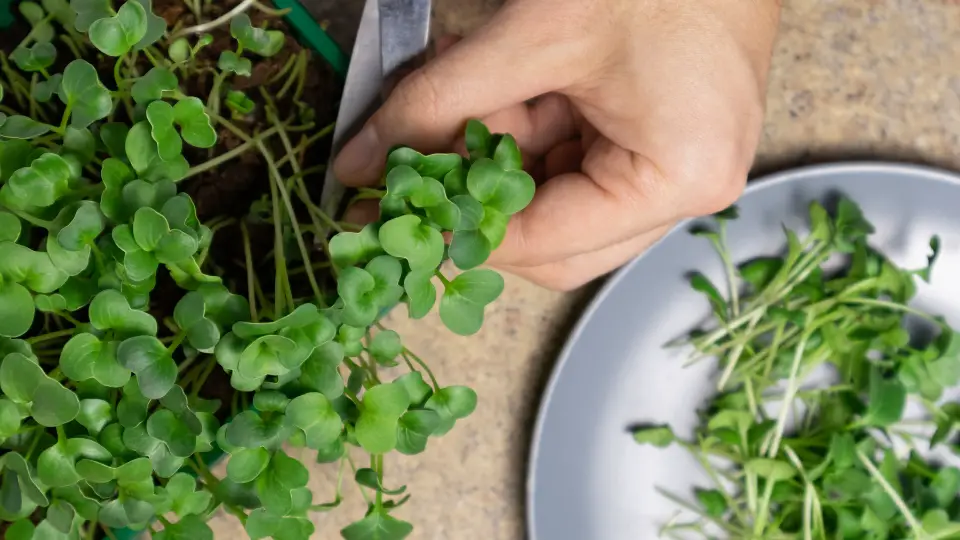
Setting The Temperature And Time
The essential aspect is setting the temperature and time. For dehydrating microgreens, it is recommended to use a low temperature between 95 to 110 degrees Fahrenheit (35 to 43 degrees Celsius) and a drying time of approximately 4 to 6 hours. This helps preserve microgreens’ delicate flavor and texture while effectively removing moisture.
Using Trays Or Screens
When it comes to dehydrating microgreens, you can choose between using trays or screens. Trays with mesh bottoms allow for better airflow and quicker drying, while screens with smaller holes prevent the microgreens from falling through. Both options have advantages, so you can choose the one that works best for you.
Rotating Trays For Even Drying
Rotating the trays every hour or so ensures each microgreen dries evenly. This helps distribute the heat and airflow evenly throughout the drying process, preventing any moisture build-up. By rotating the trays, you can achieve consistent results and get perfectly dehydrated microgreens.
Storage And Packaging
When it comes to dehydrating microgreens, proper storage and packaging are essential to maintain their quality and shelf life. This section will explore the key factors to consider when storing and packaging dehydrated microgreens: cooling and storing, choosing suitable containers, using oxygen absorbers, and labeling and dating.
Cooling And Storing Dehydrated Microgreens
After dehydrating your microgreens, it is crucial to cool them down to room temperature before storing them. This helps prevent condensation, which can lead to moisture absorption and spoilage. Ensure that your dehydrated microgreens are completely cooled before moving on to the storage process.
Choosing Suitable Containers
Selecting the proper containers is significant to preserve the quality and freshness of your dehydrated microgreens. Opt for airtight containers that provide an excellent seal to prevent air and moisture from entering. Mason jars, vacuum-sealed bags, or food-grade plastic containers with tight-fitting lids are excellent choices for storing dehydrated microgreens.
Using Oxygen Absorbers
Consider using oxygen absorbers further to enhance the shelf life of your dehydrated microgreens. These small packets contain iron powder that absorbs any remaining oxygen inside the container, minimizing the oxidation process that can cause deterioration. Place the oxygen absorbers in the container before sealing them tightly to maximize their effectiveness.
Labeling And Dating
To ensure proper rotation and consumption, it is crucial to label and date your stored dehydrated microgreens. This practice helps you easily identify the contents within each container and ensures you consume them within the recommended timeframe. Use waterproof labels and a permanent marker to label each container with the variety of microgreens and the date of dehydration.
In conclusion, proper storage and packaging are key factors in maintaining dehydrated microgreen quality and longevity. Cooling and storing at room temperature, choosing suitable containers, using oxygen absorbers, and labeling and dating each container are essential to maximize shelf life. This will retain your dehydrated microgreens’ flavor and nutritional value.
How To Rehydrate Dehydrated Microgreens
Drying microgreens is a great way to preserve their nutrients and extend their shelf life. However, once dehydrated, you might wonder how to return them to freshness. Rehydrating dehydrated microgreens is a simple process that restores flavor, texture, and nutritional content.
Various methods of rehydrating dehydrated microgreens will be discussed in this post, including soaking, steaming, and blanching. Let’s dive in and discover the best ways to revitalize your dehydrated microgreens!
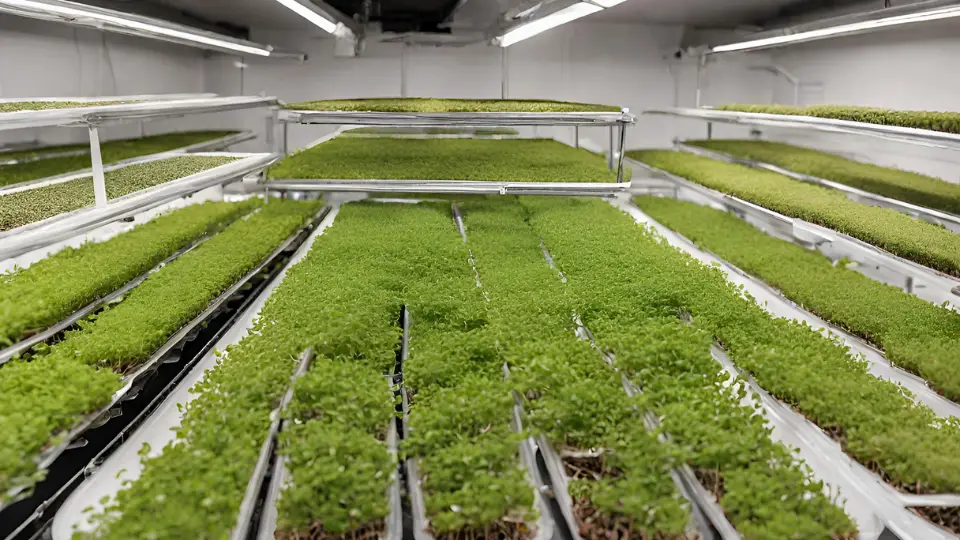
Choosing The Right Rehydrating Method
When choosing the right method for rehydrating your dehydrated microgreens, it’s important to consider the desired texture and flavor you want to achieve. Different methods yield slightly different results, so it’s a good idea to experiment and find the best method.
Soaking In Water
Soaking dehydrated microgreens in water is perhaps the simplest way to rehydrate them. Cover your dehydrated microgreens in a bowl or container with fresh, clean water. Allow them to soak for about 10-15 minutes or until they have regained their desired texture.
Key points:
- Place dehydrated microgreens in a container
- Cover them with water
- Soak for 10-15 minutes or until the desired texture is achieved
Steaming Or Blanching
Another method of rehydrating dehydrated microgreens is steaming or blanching. This method can help retain their vibrant color and crisp texture. To do this, boil a pot of water and add your dehydrated microgreens.
Let them steam for about 1-2 minutes or until they soften to your preference. Be sure not to overcook them, as they lose nutritional value.
Key points:
- Bring water to a boil
- Add dehydrated microgreens
- Steam for 1-2 minutes or until desired texture is achieved
By choosing the proper rehydrating method and following the steps outlined for each, you can enjoy the flavors and nutrition of fresh microgreens even after they have been dehydrated. Whether you prefer to soak them in water or steam them, rehydrating dehydrated microgreens is an excellent way to bring them back to life and elevate your culinary creations.
Recipes And Creative Uses For Dehydrated Microgreens
Discover a variety of recipes and creative ways to use dehydrated microgreens. Learn how to dehydrate microgreens to preserve flavor and nutrients for longer-lasting enjoyment.

Adding To Soups, Stews, And Salads
Dehydrated microgreens are versatile and can elevate your dishes’ flavor and visual appeal. Dehydrated microgreens can take your culinary creations to the next level, whether making a hearty soup, a comforting stew, or a refreshing salad. The concentrated flavors of the dehydrated microgreens intensify, providing a burst of taste with every bite.
Rehydrate the microgreens by soaking them in water for a few minutes before incorporating them into your soups, stews, or salads. The microgreens’ vibrant colors and delicate textures will add beauty, nutrition, and a unique flavor to your meals.
Flavoring Oils And Vinegars
Dehydrated microgreens can also infuse oils and vinegar, creating deliciously flavored condiments that can be drizzled over salads, roasted vegetables, or grilled meat. The process is simple and yields impressive results. Place the dehydrated microgreens in a sterilized glass jar, then pour the oil or vinegar of your choice over them.
Seal the jar tightly and allow the flavors to meld for a few weeks. The infused oil or vinegar will take on the aroma and taste of the microgreens, providing a unique and zesty touch to your dishes.
Making Tea And Infused Water
Did you know dehydrated microgreens can be transformed into delicious teas and infused waters?
Not only do these beverages offer a refreshing way to hydrate, but they also provide a healthy dose of vitamins and antioxidants. To make a tea, simply steep the dehydrated microgreens in hot water for a few minutes.
You can experiment with different combinations to create your unique flavors. Infused water can be made by adding the dehydrated microgreens to a pitcher of cold water and letting it sit in the refrigerator for a few hours. The resulting infusion will have a subtle hint of flavor and a beautiful visual appeal.
Storing For Longer-term Preservation
Dehydrated microgreens can be stored for longer-term preservation, allowing you to enjoy their flavors and benefits throughout the year. To store dehydrated microgreens effectively, ensure they are thoroughly dried and moisture-free.
Store them in airtight containers, such as glass jars or vacuum-sealed bags, in a calm, dark place. Properly stored dehydrated microgreens can last several months without losing flavor or nutritional value. Whenever you need to enhance your dishes with a burst of flavor, rehydrate the microgreens and enjoy their vibrant taste and color.
Tips And Tricks For Successful Dehydration
Dehydrating microgreens is an excellent way to preserve their nutritional benefits and enhance their shelf life. To ensure successful dehydration, you should keep some essential tips and tricks in mind. From choosing the best varieties to maintaining hygiene and cleanliness, these practices will help you achieve optimal results.
In this article, we will explore the following subtopics: Choosing the best varieties for dehydration, avoiding common mistakes, achieving optimal dehydration conditions, and maintaining hygiene and cleanliness.
Choosing The Best Varieties For Dehydration
When it comes to dehydrating microgreens, not all varieties are suitable. Certain varieties retain their flavors and textures better during dehydration, making them ideal choices.
Here are some varieties that are known to dehydrate well:
| Variety | Description |
|---|---|
| Broccoli | It offers a mild flavor and a crisp texture when dehydrated. |
| Kale | It retains its nutritional value and adds a pleasant crunch to dishes. |
| Mizuna | It develops an intense flavor and maintains its vibrant green color. |
Avoiding Common Mistakes
While dehydrating microgreens may seem straightforward, common mistakes can affect the quality of the end product. By being mindful of these mistakes, you can ensure successful dehydration:
- Do not overcrowd the dehydrator trays, which can result in uneven drying. Leave enough space for proper airflow.
- Choose microgreens that are fresh and in their prime. Avoid using wilted or discolored greens as they may not dehydrate properly.
- Set the dehydrator at the correct temperature and time recommended for microgreens. Different varieties may require slightly different settings.
- Rotate the trays periodically during the dehydration process to ensure even drying.
- Check for dryness by touching the microgreens. They should be brittle and crumble easily when fully dehydrated.
Optimal Dehydration Conditions
Creating the right environment for dehydration plays a crucial role in achieving the best results. Here are some optimal conditions to consider:
- Ensure the dehydrator is placed in a well-ventilated area away from direct sunlight to avoid affecting the flavor and nutritional content.
- Maintain a temperature between 110°F and 135°F (43°C to 57°C) to gently remove the moisture without overcooking the microgreens.
- Keep the dehydration process within the recommended time frame. Over-drying can result in loss of flavor and nutrients.
Maintaining Hygiene And Cleanliness
Hygiene and cleanliness are vital to prevent the growth of bacteria and mold during the dehydration process. Ensure the following practices are followed:
- Thoroughly wash and sanitize all equipment before and after use, including trays and utensils.
- Handle microgreens with clean hands and ensure they are free from any contaminants.
- Store dehydrated microgreens in airtight containers in a cool, dry, and dark place to maintain their freshness and quality.
Adhering to these tips and tricks can successfully dehydrate microgreens while preserving their nutritional value and flavor. Experiment with different varieties and enjoy the convenience of having these nutritious greens available for extended periods.
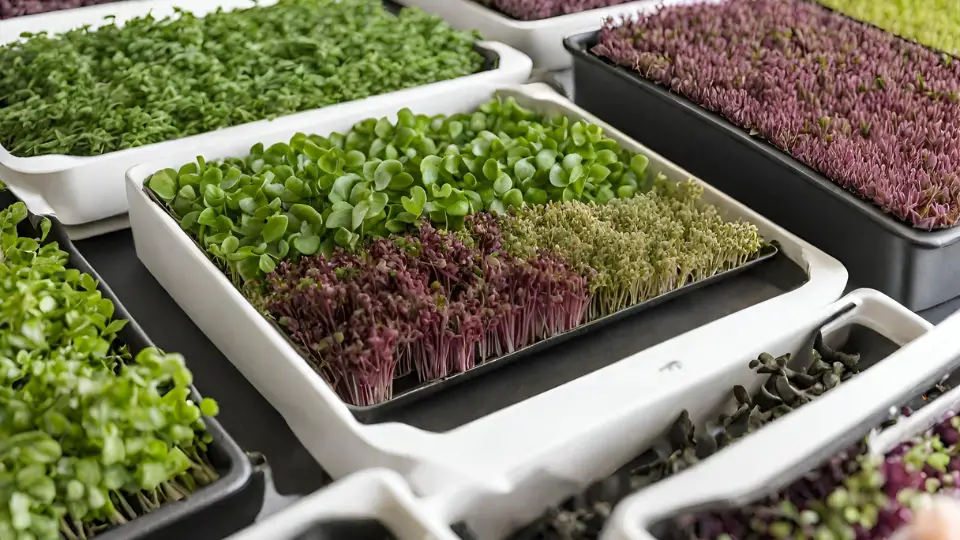
Potential Challenges And Troubleshooting
Learn how to dehydrate microgreens and overcome potential challenges with our troubleshooting guide. Discover tips and techniques for the successful dehydration of these nutritious greens.
Mold And Spoilage Prevention
Mold and spoilage can be common issues when dehydrating microgreens. It is important to take preventative measures to ensure your microgreens stay fresh and free from harmful bacteria. Here are some tips to prevent mold and spoilage:
1. Clean and sanitize: Before dehydrating your microgreens, wash them thoroughly and remove any dirt or debris. Use a mild and food-safe sanitizer to disinfect your equipment and workspace to prevent cross-contamination.
2. Proper airflow: Adequate airflow prevents moisture buildup and mold growth. Arrange your microgreens in a single layer on the dehydrator trays, allowing enough space between each sprout for air to circulate evenly.
3. Low humidity environment: Ensure the drying area has low humidity levels to prevent mold growth. If the humidity is too high, consider using a dehumidifier or placing a moisture-absorbing packet in your drying area.
4. Regular monitoring: Check your microgreens regularly during the drying process. Remove any wilted or discolored sprouts to prevent them from contaminating the others.
5. Storage containers: Once your microgreens are fully dehydrated, store them in airtight or vacuum-sealed bags. This will help minimize exposure to moisture and prolong their shelf life.
Preventing Excessive Browning
Excessive browning can affect the appearance and taste of your dehydrated microgreens. To prevent this, follow these guidelines:
1. Blanching: Before dehydrating, blanch your microgreens by quickly immersing them in boiling water for a few seconds, then transferring them to an ice bath to cool. Blanching can help preserve color and texture.
2. Acidulated water: Soaking your microgreens in acidulated water can also help prevent browning. To make acidulated water, add a small amount of lemon juice or vinegar to a water bowl and soak the microgreens for a few minutes before drying.
3. Quick drying: Ensure your dehydrator is set at the appropriate temperature for microgreens, generally between 90°F and 100°F (32°C and 38°C). Quick drying can help minimize browning, as slower drying can cause enzymatic reactions that lead to discoloration.
4. Avoid direct sunlight: Direct sunlight can cause excessive browning, so place your dehydrator in a shaded area or use an opaque cover. Exposing the microgreens to indirect light will help maintain their vibrant color.
Restoring Texture And Color
Sometimes, drying can cause microgreens to lose their texture and vibrant color. Here are some ways to restore them:
1. Rehydration: If your microgreens have become too dry and lack texture, rehydrate them by soaking them in cool water for a few minutes. Gently pat them dry with a paper towel or salad spinner to remove excess moisture.
2. Mist with water: Lightly misting your dehydrated microgreens with water can help restore some of their lost moisture and bring back their vibrant color. Be careful not to oversaturate the greens, as this can lead to rehydration and potential spoilage.
3. Moisture-absorbing packets: If your microgreens have absorbed excess moisture and become soggy, place a moisture-absorbing packet in the storage container to help regulate humidity levels and maintain their texture.
Dealing With Uneven Drying
Uneven drying can be frustrating, leading to inconsistent results and potential spoilage. To ensure each microgreen dries evenly, follow these tips:
1. Pre-sorting: Sort your microgreens according to size and thickness before dehydrating. Thin and delicate sprouts may dry faster than thicker ones, so grouping them accordingly is essential.
2. Evenly spaced: Arrange your microgreens in a single layer on the dehydrator trays, ensuring they are evenly spaced. This allows for proper airflow and prevents overlapping, leading to uneven drying.
3. Rotate trays: If you notice some trays drying faster than others, rotate them periodically during the drying process. This helps ensure that each tray receives equal heat distribution and promotes even drying.
4. Adjust temperature: If you consistently experience uneven drying, adjust your dehydrator’s temperature settings. Experiment with slightly higher or lower temperatures to find the sweet spot for your microgreens.
Be careful not to set the temperature too high, which may result in over-drying or browning. With these troubleshooting tips, you can overcome potential challenges when dehydrating microgreens and enjoy the benefits of delicious, long-lasting sprouts.
Frequently Asked Questions For How To Dehydrate Microgreens
Can Micro Greens Be Dehydrated?
Yes, microgreens can be dehydrated, providing a longer shelf life for storage and retaining their nutritional value.
How Do You Turn Microgreens Into Powder?
Start harvesting microgreens at the right growth stage to turn them into powder. Clean the microgreens thoroughly, removing any dirt or debris. Then, dry the microgreens completely using a dehydrator or oven on low heat. Once dried, blend the microgreens into a fine powder using a blender or food processor.
Store the powder in an airtight container.
How Do You Dehydrate Broccoli Microgreens?
To dehydrate broccoli microgreens, spread them evenly on a dehydrator tray and set the temperature to 105°F. Leave them to dry for about 12-16 hours until they become crispy. Once fully dehydrated, store them in an airtight container to maintain freshness.
Conclusion
Dehydrating microgreens is a simple and efficient way to preserve their nutrients and extend their shelf life. Following the proper steps ensures that your dehydrated microgreens retain their vibrant color, intense flavors, and nutritional value. Dehydrated microgreens offer versatility and convenience if you use them in soups, salads, or as flavor-packed toppings.
So, start dehydrating today and enjoy the benefits of these flavorful and nutritious greens all year round.
Video Source: https://www.youtube.com/watch?v=k7UPNa2rRIs

